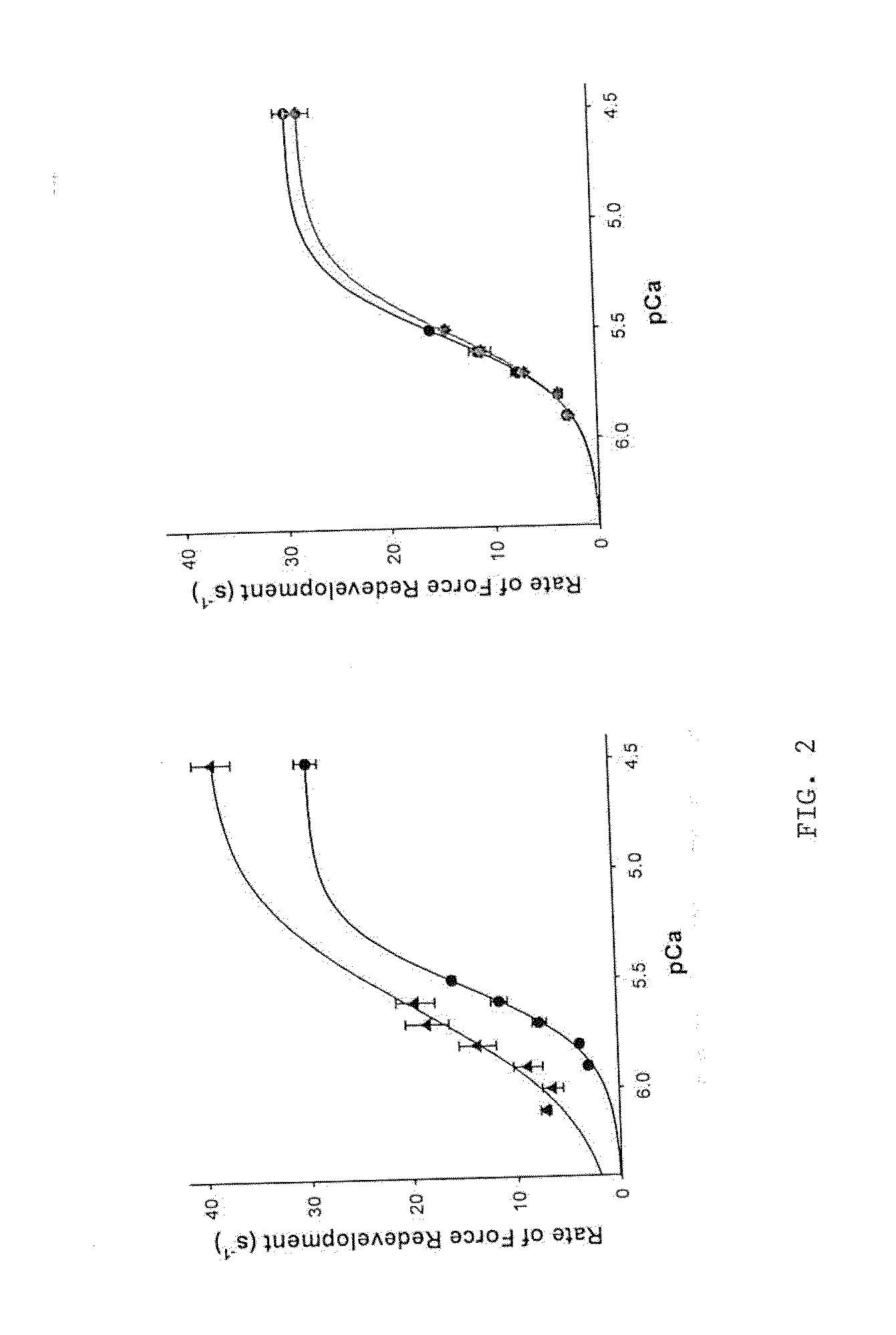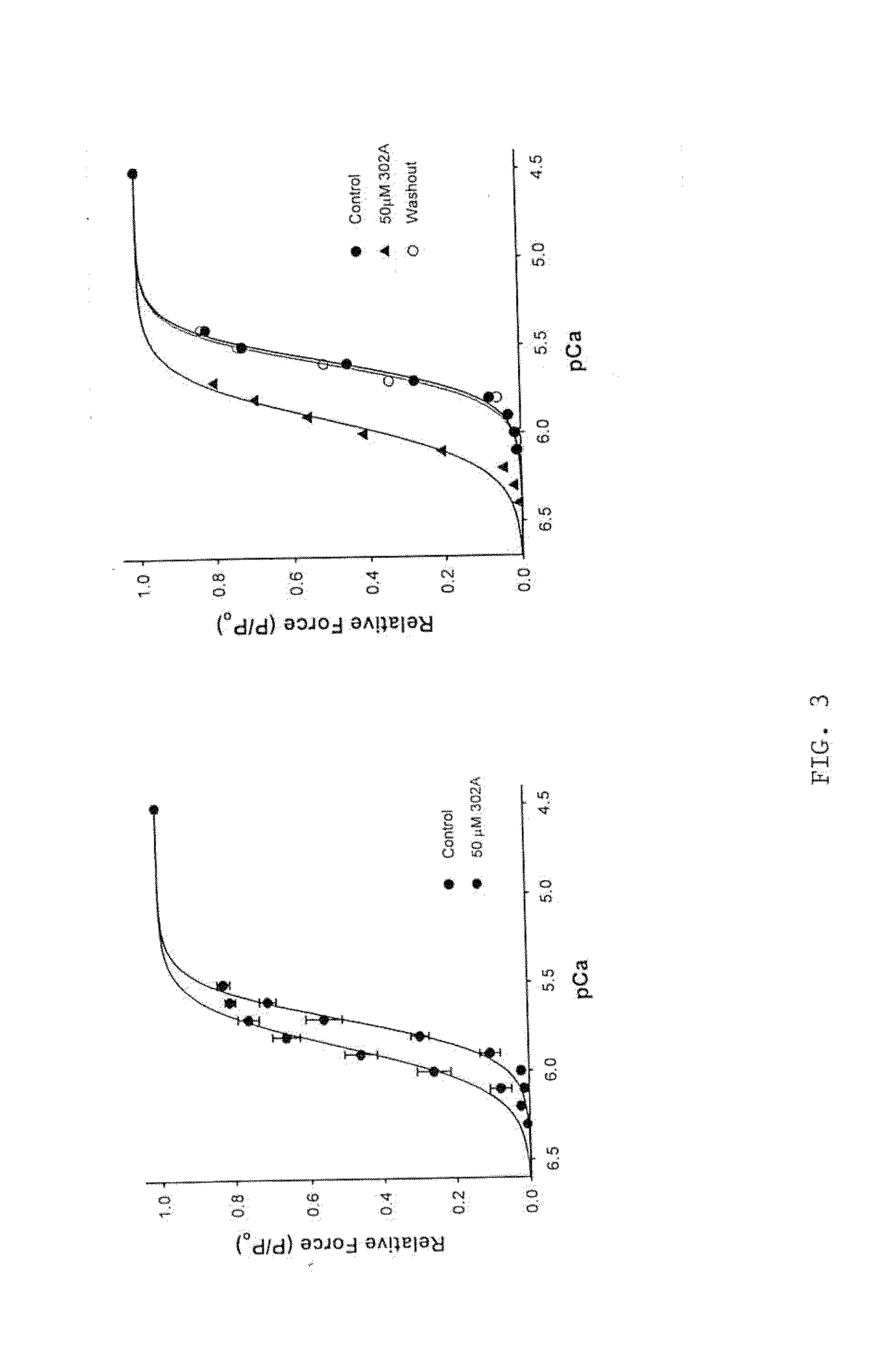Inhibition of mypb-c binding to myosin as a treatment for heart failure
a technology of myosin and myosin, which is applied in the field of biochemistry and medicine, can solve the problems of serious myocardial damage, significant public health problems, and major health risks, and achieve the effects of improving one or more symptoms, increasing exercise capacity, and increasing cardiac ejection volum
- Summary
- Abstract
- Description
- Claims
- Application Information
AI Technical Summary
Benefits of technology
Problems solved by technology
Method used
Image
Examples
example 1
Materials and Methods
[0212]Development of the Peptide Disruptor of cMyBP-C Binding to Myosin.
[0213]A myosin-binding peptide-based therapeutic agent has been identified based on the premise that disruption of the myosin-cMyBP-C interface would release a molecular brake on cardiomyocyte contractility imposed by the inhibitory activity of the unphosphorylated form of cMyBP-C on myosin. Since there is no PDB-reported structure for the 11-domain protein cMyBP-C, the molecular design of the peptide was developed on a sequence-based approximate prediction of a putative myosin-binding site. To predict the sequence of the peptide, the inventors sought a region between the C1 and C2 domains of cMyBP-C (which binds to myosin) in the twilight zone between order and disorder, using PONDR®, a predictor of native disorder (Pietrosemoli et al., 2007). The version used, PONDR-VLXT (Li et al., 1999), assigns a disorder propensity score D to each amino acid along the chain, with D=0 corresponding to c...
example 2
Results
[0226]Murine Myocardium.
[0227]The peptide disruptor of MyBP-C binding to myosin (called peptide “302a”) was infused into mouse skinned myocardium at a concentration of 50 μM (FIG. 1). Force at each pCa was increased by the peptide, resulting in a shift of the force-pCa relationship to lower Ca2+ concentrations, i.e., the pCa50 increased from xxx in the control to xxx following peptide treatment. Treatment of the preparations with a scrambled peptide had no effect on the force-pCa relationship, indicating that the peptide is a specific activator of myocardial force.
[0228]Peptide 302a also accelerated the rate of force development at each pCa studied in that the ktr-pCa relationship was shifted to lower Ca2+ concentrations when the preparation was treated with 50 μM 302a, but not when treated with scrambled peptide (FIG. 2). Consistent with this prediction, the effects of the 302a peptide on force development were significantly greater in porcine than in murine skinned myocardi...
PUM
| Property | Measurement | Unit |
|---|---|---|
| molecular weight | aaaaa | aaaaa |
| delay time | aaaaa | aaaaa |
| delay time | aaaaa | aaaaa |
Abstract
Description
Claims
Application Information
 Login to View More
Login to View More - R&D
- Intellectual Property
- Life Sciences
- Materials
- Tech Scout
- Unparalleled Data Quality
- Higher Quality Content
- 60% Fewer Hallucinations
Browse by: Latest US Patents, China's latest patents, Technical Efficacy Thesaurus, Application Domain, Technology Topic, Popular Technical Reports.
© 2025 PatSnap. All rights reserved.Legal|Privacy policy|Modern Slavery Act Transparency Statement|Sitemap|About US| Contact US: help@patsnap.com



